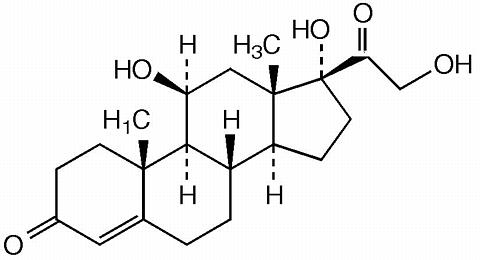
Research from Ann & Robert H. Lurie Children's Hospital of Chicago conducted in mice shows the drug hydrocortisone a steroid commonly used to treat a variety of inflammatory and allergic conditions -- can also prevent lung damage that often develops in premature babies treated with oxygen.
If affirmed in human studies, the results could help pave the way to a much-needed therapy for a bronchopulmonary dysplasia (BPD), a condition that affects 10,000 newborns in the United States each year and can lead to chronic lung disease and, ultimately, heart failure. In a set of experiments, to be published in the May print issue of the journal Pediatric Research, a team of Lurie Children's scientists showed the drug reduced damage to the delicate blood vessels inside the lungs of newborn mice and reversed some of BPD's harmful downstream effects on the heart.
"Bronchopulmonary dysplasia is a devastating, often unavoidable side effect of a standard lifesaving therapy with oxygen used to treat newborn babies, so our findings are a promising indicator that a well-known drug that's been around for a long time may help stave off some of this condition's worst after-effects," says study lead investigator and Lurie Children's neonatologist Marta Perez, M.D., who is also assistant professor of Pediatrics at Northwestern University Feinberg School of Medicine.
BPD often develops in preemies as a result of oxygen treatment -- a lifesaving therapy given to premature babies to ensure their brains, hearts and lungs get enough of this vital gas so they can develop and function properly. However, high levels of oxygen can also damage the delicate air sacs inside the lungs, the tiny filters that exchange carbon dioxide for oxygen.
Damaged by high levels of oxygen, these immature sacs, called alveoli, can become misshapen and reduce the lungs' capacity to filter. Over time, the damage spreads further, as the blood vessels inside the lungs harden and develop abnormally high pressure. Persistently elevated pressure inside the lungs, a disease known as pulmonary hypertension can, over time, lead to heart failure.
Oxygen supplementation is vital for premature newborns, yet because it can have such serious side effects, scientists have long sought therapies that can avert oxygen-induced damage in premature lungs.
The new study findings show that hydrocortisone prevented the development of pulmonary hypertension and enlarged heart muscle, the two common consequences of BPD.
In a set of experiments, researchers placed a group of newborn mice in chambers with high levels of oxygen, while another group was allowed to breathe room air. Animals living in high-oxygen chambers quickly developed the mouse version of BPD, mimicking human disease. Mice with BPD were given either low or high doses of hydrocortisone or placebo. As expected, mice treated with placebo developed pulmonary hypertension and enlarged right side of the heart. However, mice treated with hydrocortisone showed near normal right heart ventricles, despite having BPD. Mice with BPD treated with placebo went on to develop abnormally thickened lung vessels, a cardinal sign of pulmonary hypertension, while mice with BPD treated with hydrocortisone had near-normal blood vessels in their lungs, the researchers found.
Next, researchers set out to find out how hydrocortisone protected the lungs of premature mice. Building on an earlier observation, the scientists focused on an enzyme called PDE-5, known to break down a signaling molecule that shields and strengthens blood vessels. In a previous study, the Lurie Children's team found that too much oxygen can interfere with the activity of PDE-5 and thus speed up the breakdown of this vessel-shielding signaling molecule.
Hydrocortisone, the new study found, protected the lung by preventing PDE-5 from going haywire despite high levels of oxygen.
Comparing lung cells from mice exposed to high levels of oxygen, the researchers noticed that animals treated with steroids had far lower levels of PDE-5 than mice that didn't get the treatment.
That finding, the team says, points to the underlying mechanism behind the drug's protective effect.
In a final observation, the team discovered that higher doses of hydrocortisone could have the opposite effect and damage lung tissue. Indeed, when researchers examined lung tissue under a microscope, they noticed that animals treated with 10 mg of cortisone per kilogram of body weight had abnormal lung tissue. By contrast, animals given half that dose or a tenth of that dose had normal lung tissue.
Hydrocortisone drug can also prevent lung damage in premature babies: Research from Ann & Robert H. Lurie Children's Hospital of Chicago conducted in mice shows the drug hydrocortisone -- a steroid commonly used to treat a variety of inflammatory and allergic conditions -- can also prevent lung damage that often develops in premature babies treated with oxygen.

No comments:
Post a Comment